The Risks and Rewards of New Construction Technologies

A recent CEDA report found that due to technological advances over the next 10 to 15 years, about 40 per cent of Australia’s workforce face a high probability of being made redundant.
Some of the new revolutionary technologies we hear about in the press include:
- Business information modelling, virtual reality and augmented reality which will enable project teams to collaboratively build, experience and test a virtual building, precinct or even city prototype before work starts on site
- 3D printing, which allows building components and even whole buildings to be manufactured through new concrete, steel and polymer printing technologies on and off-site
- Robots and drones which can monitor and undertake tasks in awkward and dangerous places
- Robotic exoskeletons fitted to workers to boost strength without reducing physical co-ordination
- Wearable and ultra-mobile computers and apps which utilise touch screen technologies
- GPS and spatial information systems which enable plant and machinery to be driven remotely and sites to be set out more rapidly and accurately
- Gaming technologies which enable managers to ‘play’ with different logistical configurations to optimise project management strategies and fundamentally alter the relationship between businesses and their customers
- Social media offering businesses enormous potential to network, communicate, consult and collaborate in real time with internal and external stakeholders
- New online tools which will enable business to crowd source funding for new ideas, to customise and personalise products and services, and to engage with customers in new ways never imagined before
- Smart phone technologies which enable customers to interact with buildings more remotely and effectively or to remotely collect safety risk data, track the location of workers on large remote projects and issue warnings around invisible safety risks
- Extra-high strength lightweight concretes which use basalt fibre or glass composite reinforcement
- Smart materials which have ultra-high strengths and insulation properties, absorb pollution, clean and repair themselves and monitor their own strength and performance
- Organic solar cells which can be sprayed using ink-jet technologies onto building materials to make buildings net generators of energy rather than energy users
- Smart windows which produce electricity and which can change the opacity of glass to filter light
- Cloud computing, big data and the internet of things, which offers a much cheaper way for businesses to store and analyse information and keep up-to-date
- Smart metering that can provide real time feedback to users to help them change their energy and water consumption habits
- Biomimicry, which enables designers to replicate natural systems in design and products to reduce our consumption of natural resources
Certainly there is some reliable evidence that some of these technologies can produce productivity improvements in the range of 30 to 40 per cent. However, technology is also a dangerous and bottomless pit for the unwary and businesses must be very careful to assess the risks and opportunities for their business before making the decision to invest.
In doing this, a few key insights are useful.
First, it is important to appreciate that firms in different countries adopt technologies for very different reasons. For example, Singaporean firms often use technology to reduce their dependence on unreliable migrant labour, while Scandinavian firms to allow them to build in low temperatures and short days.
Second, it is important to appreciate that every business is unique in terms of its ‘absorptive capacity’ to successfully integrate a new technology into its business and will need a different strategy to do so.
Third, it is important to treat claims of business transformation with healthy scepticism. Many of these new technologies are in their experimental phases and are not yet backed up with clear evidence of benefits. As numerous well-intentioned companies who have rushed into the latest technology will sadly tell you, it is all too easy to be swept away with the excitement and euphoria of it all and waste huge amounts of money with little tangible return.
Admittedly, a few firms are willing to incur these costs in the anticipation of positioning themselves as ‘first movers’ in a lucrative market. But most regret their haste and get drawn into a bottomless money pit which is increasingly hard to retreat from. Not only can unary firms get drawn into a vicious cycle of investment, but they can see the technology they adopted become quickly redundant as their competitors learn their hard lessons for free to grab their market share. These firms have learnt the most important lesson in technology innovation the hard way. It is not the technology that gives you a competitive advantage, but how effectively it is used and integrated into your business and supply chain.
Certainly, there are many exciting technological opportunities for us all to explore in bringing about a much needed increase in productivity, efficiency, quality, safety and sustainability. Relatively speaking, construction remains a relatively low-technology, labour-intensive, craft-based industry in comparison to other industries such as manufacturing. The competitive advantage for those who adopt new technology could potentially be enormous. It is also true that other countries have developed clear plans, strategies and targets to automate and digitise their construction industries and that we seem to be falling behind in the global construction innovation stakes. However, it is also important to be cognisant of the many risks involved in adopting new technologies.
Apart from the obvious dangers associated with constant obsolescence, here are some examples of less obvious technology innovation risks:
- Employees and supply and demand chain partners will need to be educated and trained to effectively use and accept new technologies
- There could be significant inter-operability ripple effects through existing systems and technologies in adopting a new technology
- Traditional industry cultures and ways of working will need to change. The fragmented and confrontational way in which construction traditionally takes place means that many firms in the construction industry will struggle to understand how to work in integrated teams and to share the large amounts of new data that will be generated in the future about how buildings are built, function and perform
- New technologies will require firms to reassess and more clearly define their role in the new value streams that emerge. In traditional industries like construction, this will involve developing a new generation of professionals with multi-disciplinary and technological competencies who are able to work across traditional professional boundaries, relationships and knowledge domains
- Industrial relations will need to be considered. Resistance to technological change has been institutionalized by restrictive practices, demarcation and traditional ways of working in construction which go back hundreds of years. And many of these practices and power structures continue to be protected by powerful professional and trade associations
- Technology will create big challenges for companies in managing cyber-crime and information security and communications. Since large amounts of data can now be downloaded onto smart phones, it can also be lost or stolen far more easily than in the past. The sheer variability of platforms and types of phones used can make the task of managing these risks extremely difficult
- Successful construction projects are built on relationships and people and new technologies, if used wrongly, can introduce workplace tensions and uncertainties and reduce communication effectiveness rather than improve it
- Logistics can often be a major problem in geographically dispersed countries like Australia (compared to countries like the UK). Much of our manufacturing sector has been outsourced to Asia introducing additional logistics, quality and communication challenges
- There are also significant ethical issues around tracking and monitoring employees
The future looks exciting and different and one can only imagine what the construction industry will look like in 10 years. As technology rapidly changes and becomes more affordable, success will depend on shifting strategy away from the ownership and possession of technological resources to focusing on the ‘absorptive capacities’ which will enable firms to integrate and use the new technologies more effectively than their rivals. The trick in taking advantage of the many potential benefits which technology can hold is to develop an effective technology integration strategy which will navigate the risks and the opportunities carefully.
Source: https://sourceable.net/the-risks-vs-reward-of-new-construction-technologies/#












